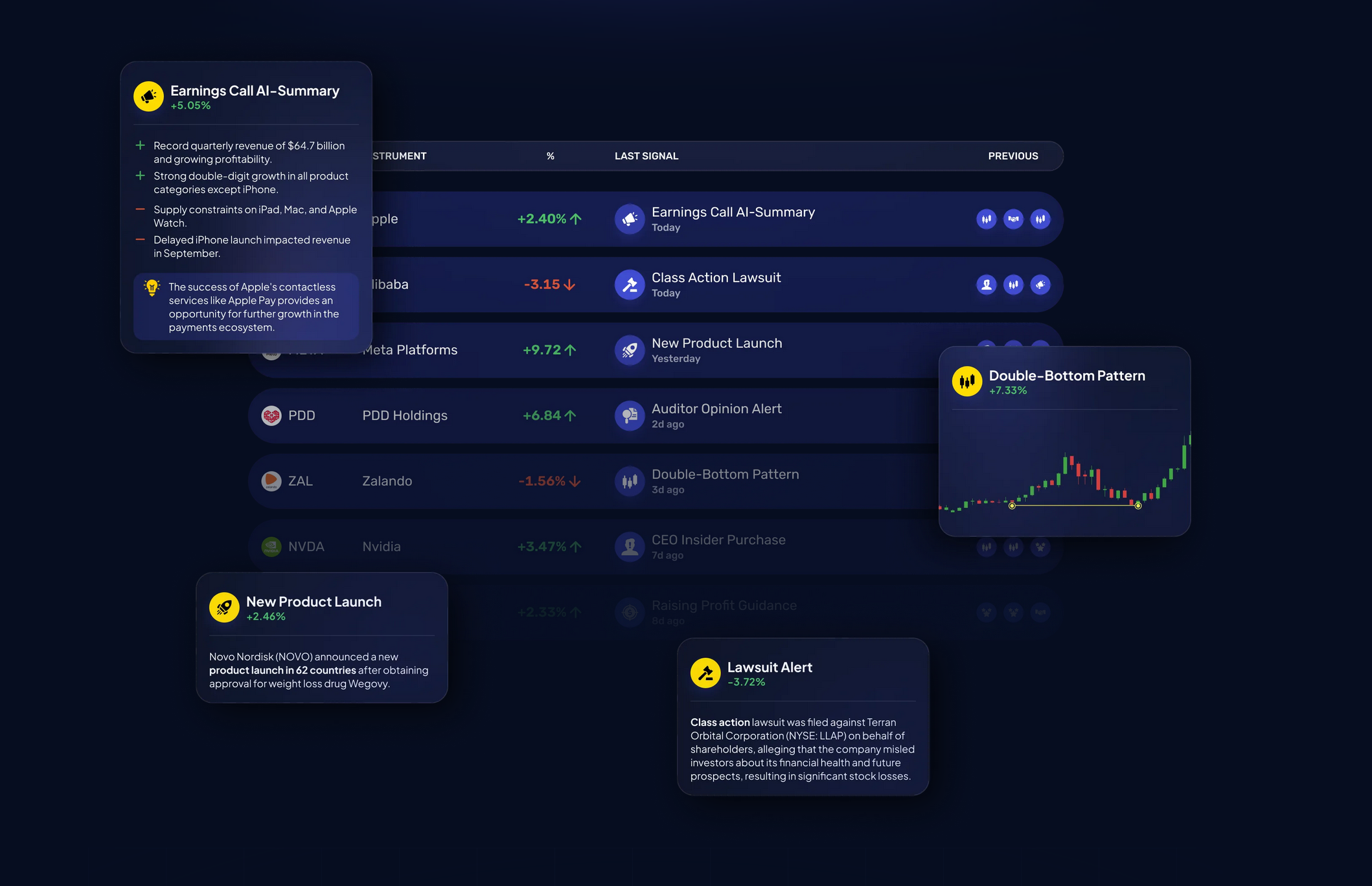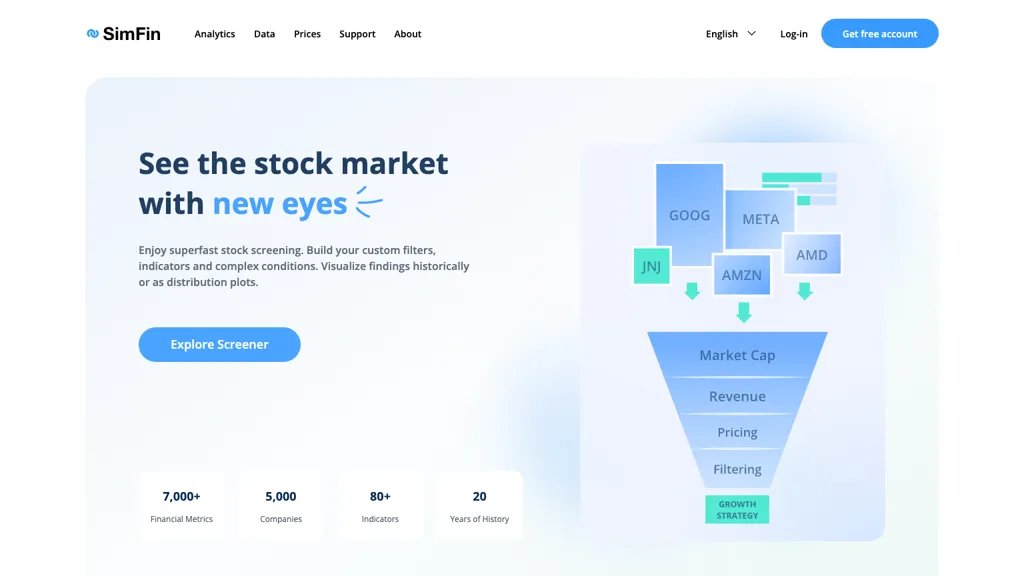20 New Suggestions For Selecting AI Stock Investing Platform Websites
20 New Suggestions For Selecting AI Stock Investing Platform Websites
Blog Article
Top 10 Tips For Assessing Market Coverage By Ai Stock Predicting Or Analyzing Trading Platforms
Market coverage is a critical aspect to consider when looking at AI platform for predicting or analyzing stocks in that it defines the depth and breadth of markets and assets that which you have access to. With a platform that offers comprehensive coverage, you can diversify your portfolio and make the most of opportunities across the globe. It is also possible to adjust to various trading strategies. Here are 10 suggestions on how to evaluate the market coverage of platforms.
1. Evaluate Supported Asset Classes
Stocks: Ensure your platform supports major stock exchanges, including NYSE, NASDAQ LSE and HKEX and includes small, mid and large caps.
ETFs: Verify that the ETF platform you are using offers an array of ETFs that provide diversified exposure across topics, sectors and countries.
Futures and options: Determine whether the platform is able to handle derivatives like options, futures and other instruments that leverage.
Commodities and Forex. Find out if the platform has forex pairs with base and precious metals, energy products, and agricultural products.
Cryptocurrencies: Check to see whether your platform is compatible with major copyright like Bitcoin, Ethereum and altcoins.
2. Verify coverage in your area
Global markets: Make sure the platform covers major global markets, which include North America, Europe, Asia-Pacific, and emerging markets.
Regional focus Verify that the platform is specialized in specific regions or markets that are in line with your interest in trading.
Local exchanges. Find out whether the platform permits local or region exchanges, that are relevant to your geographical location or business strategy.
3. Take a look at comparing real-time data delayed data Delayed Data
Real-time data - Make sure the platform offers real-time market information that will assist you in making timely decisions, especially for traders who are active.
Delayed data - Find out if delayed data is available for free or available at a cheaper cost. This may be sufficient to investors who want to invest over the long run.
Data latency: Determine whether the platform is able to reduce the latency of real-time data feeds especially in high-frequency trading.
4. Review the availability of historical data
Historical data depth Make sure the platform provides vast historical data (e.g., 10+ years) for backtesting and analysis.
Review the accuracy of data from the past.
Corporate actions: Verify whether historical data reflects stock splits, dividends, as well as other corporate actions.
5. Check Market Depth and Order Books
Data Level 2: Ensure the platform offers Level 2 (order book depth), for better price discovery.
Bid-ask Spreads: Verify that the platform is showing real-time spreads between bid and request for the most exact pricing.
Volume data: Make sure that the platform provides detailed volume data for analyzing liquidity and market activity.
6. Check the extent of coverage for Indices and Sectors
Major indices - Make sure your platform can support major indices, like the S&P 500 (e.g. NASDAQ 100 or FTSE 100), for benchmarking using indexes.
Sector-specific data : Determine if your platform contains data that is specifically for certain industries (e.g. healthcare, technology, energy) which allows you to conduct specific analyses.
Customized indexes. Find out if the platform lets you create and track custom indexes on the criteria you set.
7. Evaluation of the integration with Sentiment and News data
News feeds: Make sure the platform is able to integrate live news feeds of reputable sources (e.g., Bloomberg, Reuters) for market-moving events.
Sentiment analysis Check to see whether your platform offers sentiment analysis tools using social media data, news sources, or any other source of data.
Event-driven strategy: Make sure that the platform is compatible with the use of event-driven trading strategies (e.g. announcements of earnings, economic reports).
8. Make sure you have Multi-Market Trading Capabilities
Cross-market Trading: Make sure that the platform allows you to trade across different market segments and asset classes using a unified interface.
Conversion of currencies: Find out if the platform offers multi-currency and automatic conversion of currencies for international trade.
Verify that you are in compliance with time zones.
9. Examine Alternative Data Sources
Look for other data sources.
ESG Data Find out whether there are any data on the environment, social or governance (ESG data) on the platform for socially-responsible investing.
Macroeconomic Data: Make sure that the platform has macroeconomic indicators, such as GDP, inflation and interest rates.
Check the User Feedback and Market Reputation
User feedback: Use user reviews to determine the platform's reliability and market coverage.
The reputation of the company: Find out whether the platform is recognized by industry experts in terms of market coverage.
Case studies: Check for cases studies, testimonials and other information that highlights the effectiveness of the platform on particular market segments or asset types.
Bonus Tips
Trial period for free: Try the market coverage of the platform as well as its data quality with a demo or free trial.
API access: Verify that the API on the platform allows you to programmatically access market data for custom analysis.
Customer Support: Ensure that the platform can provide support for any data-related or market-related problems.
These suggestions will allow you assess the market coverage provided by AI trading platforms that forecast or analyze stock prices. In this way, you'll be able to select the platform that provides you with the data and markets that you require to be successful in trading. A broad market coverage can let you diversify, investigate options, and tailor your portfolio in response to market conditions. Read the most popular breaking news on chart ai trading assistant for more advice including chatgpt copyright, ai investing platform, chart ai trading assistant, ai investment app, ai for investing, best ai stock, best ai stock, ai stock, ai stocks, ai for trading and more.
Top 10 Tips To Evaluate The Speed And Latency Of Ai Stock Predicting/Analyzing Trading Platforms
The speed and latency of a system is crucial when it comes to considering AI stock prediction/analyzing trading platforms. This is especially true for algorithmic traders, high-frequency traders and active traders. Even milliseconds in delay can affect profitability and trade execution. Here are 10 top ways to measure the speed and the latency of platforms.
1. Examine Real-Time Data Feeds
Data delivery speed Make sure your platform provides real-time data (e.g. sub-millisecond delay).
Closeness of the data source: Find out if servers are located in proximity to major exchanges.
Data compression: Determine if the platform is using efficient data compression to speed data delivery.
2. Test Rate for Trade Execution Rate
Processing speed of orders: How quickly the platform completes and processes trades after you have submitted an order.
Direct market access (DMA). Be sure the platform you are using supports DMA. DMA allows orders made directly to an exchange to be processed without intermediaries.
Review the execution reports to see whether they contain timestamps for order confirmation fill, submission and order confirmation.
3. Examine the Platform Response
User interface (UI or user interface speed) The speed of user interface is a measure of how quickly the UI of a platform responds to inputs you type in (e.g. clicking buttons or loading graphs).
Chart updates - Verify that your charts are up-to-date in real-time and without delays.
Performance of mobile applications If you are using a mobile application, ensure that it runs as fast as the desktop version.
4. Look for low latency infrastructure
Server Locations: Check whether the server used by the platform is that are low-latency and located near major hubs for financial exchanges or financial hubs.
Co-location Services: Find out whether the platform permits co-location. This allows you to save your trading algorithms on servers close to the Exchange.
High-speed networks - Make sure that the platform is using fiber-optic high-speed networks or any other low-latency methods.
5. Check the backtesting speed and simulation speed.
Test the platform's capability to process and analyze the historical data.
The latency of the platform is required to permit live simulations of trades in real time.
Parallel processing: Verify whether your system uses parallel or distributed computing to speed up calculations.
6. Estimate API Latency
API response: The performance of the platform's API is measured by the amount of time it takes to answer requests.
Rate limits: Determine if API has acceptable rates limits to prevent delays in high-frequency transactions.
WebSocket: Check whether the platform is compatible with WebSocket protocols that allow streaming data in real time with low latency.
7. Test Platform Stability Under load
The scenarios of trading with high volumes: Test the stability and adaptability by simulating trading scenarios.
Check your platform out during periods of market volatility.
See whether there are any tools available for testing strategies in extreme circumstances.
8. Examine the network and connectivity
Internet speed requirements: To ensure optimal performance, make sure that your internet speed meets the speed of your preferred platform.
Reliable Connections: To avoid downtime, check if the platform is able to support redundant internet connections.
VPN latency: If you are using a VPN, verify if it introduces significant latency. Also, determine if the provider offers alternatives.
9. Make sure to check for speed enhancement features
Pre-trade analytics - Ensure that the platform is equipped with analytical tools for pre-trade to improve the route of your orders.
Smart Order Routing (SOR). Check if the platform utilizes SOR in order to find the quickest and most cost efficient execution venues.
Monitoring of latency: Ensure that the platform allows you to analyse and track your latency in real-time.
10. Review User Feedback and Benchmarks
User reviews: Conduct studies to determine the platform's speed and latency.
Third-party benchmarks by third parties. Look for independent benchmarks, or reviews that compare a platform's speed with other platforms.
Case studies: See whether the platform offers cases studies or testimonials that highlight the platform's low-latency capabilities.
Bonus Tips
Trial period: You are able to use a free demo or trial period to evaluate the platform's performance and latency.
Support for customers: Make sure the platform has assistance with issues related to latency, or for optimization.
Hardware requirements: Verify whether the platform needs specific hardware (e.g. high-performance PCs) to operate at its maximum speed.
Utilize these suggestions to determine the speed and performance of AI stock predicting/analyzing platforms. Choose one that is suitable for your trading requirements and reduces the amount of the time it takes to complete transactions. Trading platforms with low latency are crucial for traders who use high-frequency algorithms. The slightest delay can adversely affect their earnings. Follow the top rated ai options for blog info including chart ai trading, trading ai tool, best ai stocks, best stock prediction website, best ai trading platform, free ai tool for stock market india, ai tools for trading, how to use ai for stock trading, ai trading tool, best ai stocks and more.